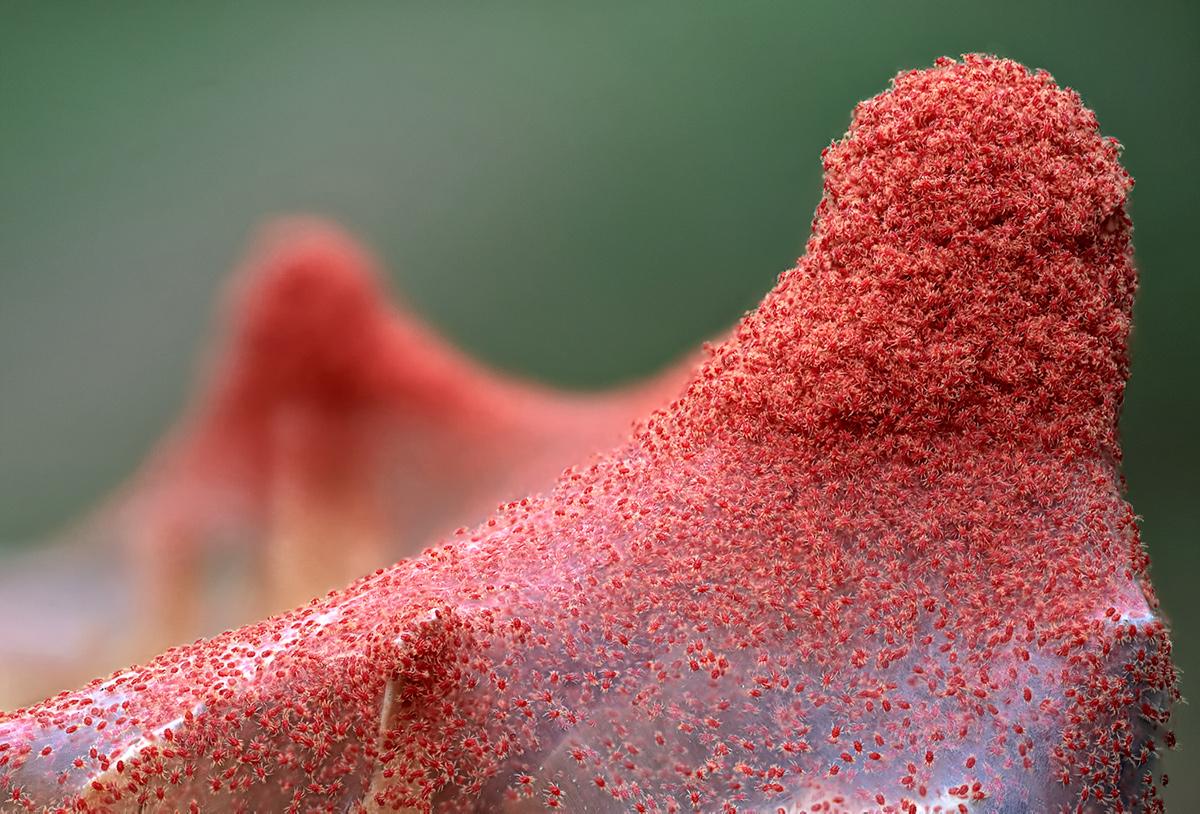
Image - Wikimedia / Aleksey Gnilenkov
In the group of fauna that can cause significant damage to our plants we find the Mites. Tiny insects that reproduce so quickly and in such numbers that they can weaken, in a matter of a few days, even the best established trees.
Any error in cultivation, any change in environmental conditions, can favor the proliferation of these parasites that we must treat to avoid greater evils. Let's know how to fight mites on plants.
Main mites that affect plants
There are many, many species of Mites around the world; in fact, there are an estimated 50 accepted. They are a subclass of arachnid, since if you look closely, both their body and their legs are similar to those of spiders. The different types that exist are normally classified according to their diet, thus, we have:
- Predators: they are those who hunt down their victims.
- herbivorous: those who eat grass.
- Saprophagous: those that feed on decomposing organic matter.
- Parasites: They are those that depend on a host to survive, and that also harms them in some way.
Those that most affect our beloved plants are, in general, these:
Aculops lycopersici
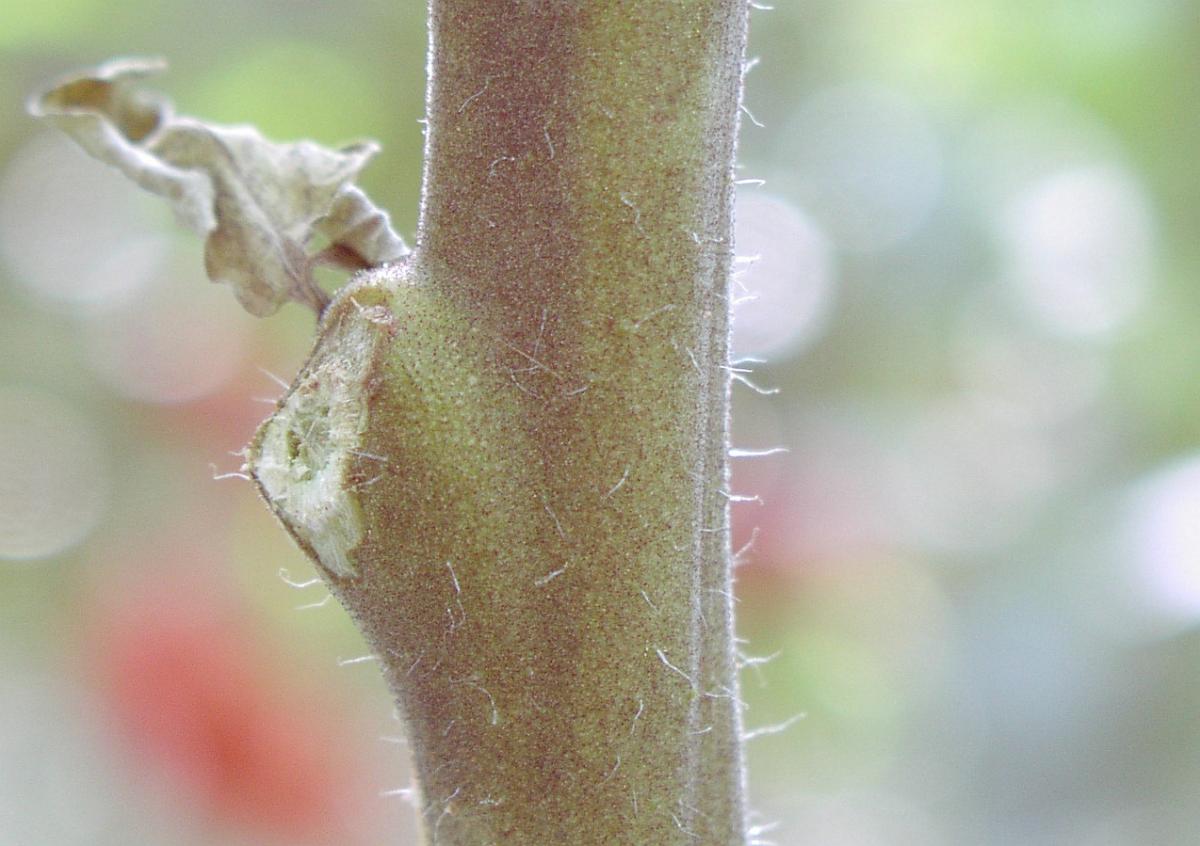
Image - Wikimedia / Goldlocki // Redness of the stem caused by mites.
It is known as tomato tan mite or tomato eriophid. As its name suggests, it affects tomatoes, but also any plant in the Solanaceae family. It has an elongated and segmented body, cream-colored, and no more than 0,17mm long.
Symptom
It causes damage to the leaves, which roll up and the underside acquires a silver-green color. Over time, both the leaves and stems turn reddish-brown, and sometimes the fruit is malformed.
Panonychus citri
It is known as the citrus red mite, and is common in orange trees, lemon trees, ... in short, in plants of the genus Citrus. The female is dark red to purple in color and has long quetas ('filaments'), causing the most damage.
Symptom
The main damages are more aesthetic than anything else. We will see a whitish discoloration of the leaves, stems and fruits. In extreme cases, the leaves would fall.
Tetranychus evansi
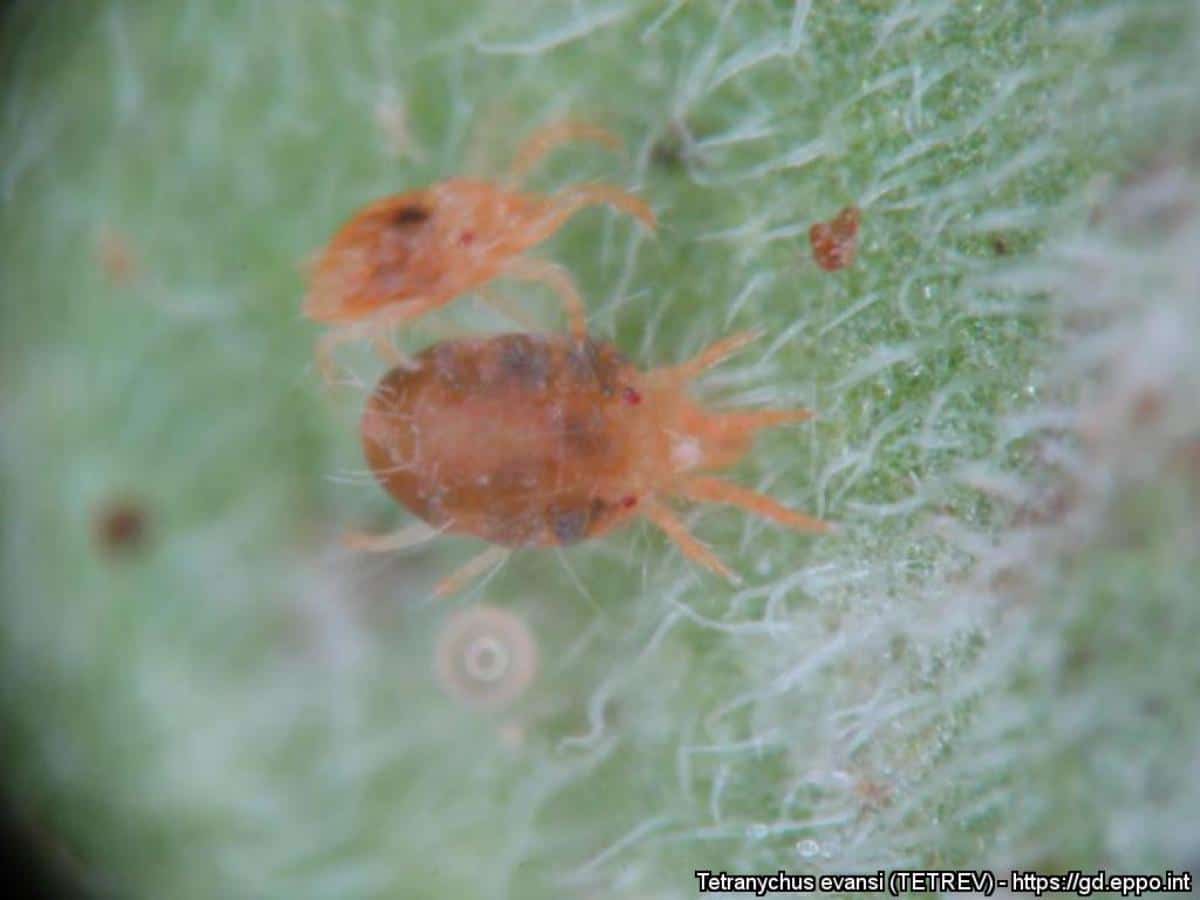
Image - EPPO Global Database
It is known as the red tomato spider, and mainly affects tomatoes and aubergines. The female is about 0,50mm long by 0,30mm wide, and has a red-orange, yellowish or green oval body.; the male is smaller.
Symptom
The infestation causes the appearance of yellowish spots on the leaves, specifically on the beam. Left unchecked, these leaves dry up and then fall off.
Tetranychus urticae
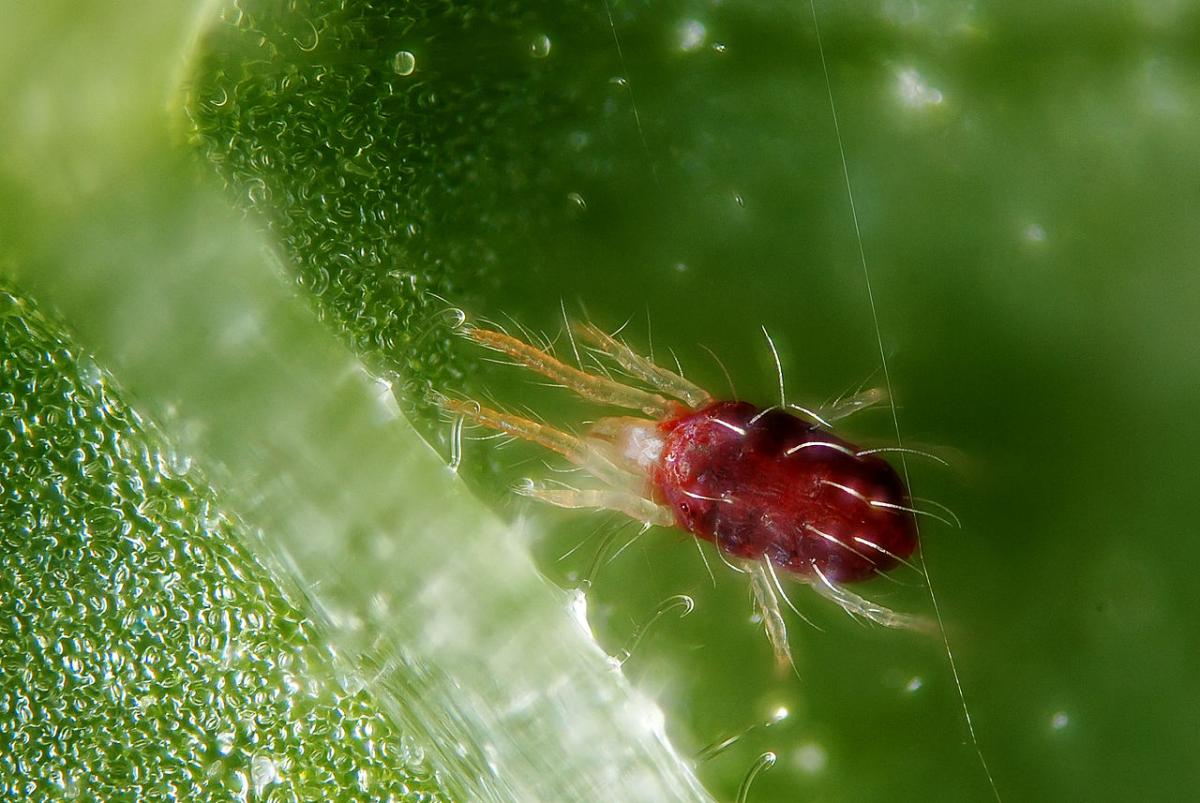
Image - Wikimedia / Gilles San Martin
It is known as Red spider or colon mite. It is one of the main pests that plants can have, especially if they are grown in dry environments. Its adult size is 0,5mm and once adult its body turns reddish. It is possible to see it with the naked eye, as dots. In addition, it is capable of weaving cobwebs.
Symptom
The leaves become discolored as they feed on their cells. It also affects the fruits, which can acquire a dirty gray color or dark spots.
How do I know that my plant is being attacked by mites?
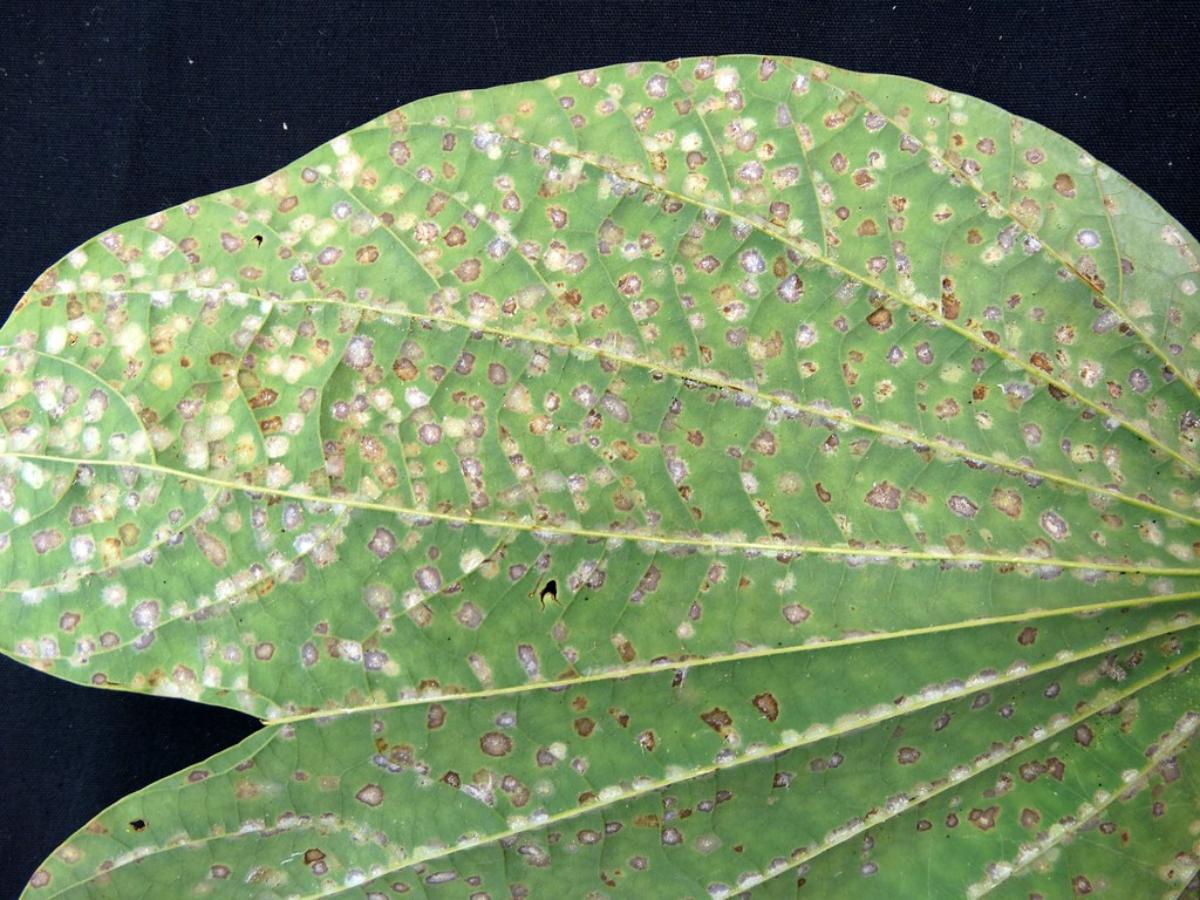
Image - Flickr / Scot Nelson
Mites are very difficult to see with the naked eye, so the fastest way to know if our beloved plant is being attacked by these organisms is by observing the symptoms it presents. If you have any of these, then now is the time to act:
- The fruits develop with malformations.
- On the leaves appear spots both on the upper side and on the underside, being common for the upper side to be clearer.
- May appear lumps on the sheets.
- Yellowing general of the aerial part (leaves).
- In the case of spider mite attacks, they will be visible very fine cobwebs on the floor.
How do they fight?
Mites on plants can be fought in several different ways, such as:
Ecological remedies
There are several ecological remedies that you can use to combat spider mites on your plants, which are:
- Dried nettles in infusion: collect 100 grams and boil them in 1l of water. When it has warmed up or cooled down, you can fill a sprayer and treat the plants.
- Onion: trimmed onion skin is an excellent repellent. It is spread throughout the soil around the plant, thus ensuring that it will not have any more mites.
- A head of garlic: boil in two liters of water, and marinate for 8 to 12 hours. It is advisable to crush the garlic.
- Insecticides suitable for organic farming: like diatomaceous earth (for sale here), neem oil (buy it here) or the potassium soap. Any of them will help you control, and even eliminate, mites from your plants.
Chemical remedies
When the pest is very advanced, it is best to opt for chemical insecticides, such as Binapacryl, Methoate o phosalone. Of course, it is very important to follow the instructions on the container, to the letter. If not, you run the risk of causing damage to the plant.
Mites are a serious problem for plants, since if measures are not taken in time, we could even lose them. But with these tips they can continue to grow properly.



excellent information thank you I will follow the indications to be able to save my plants since if they are being attacked by this parasite
Thanks Orlando. If you have any questions, we will be here 🙂